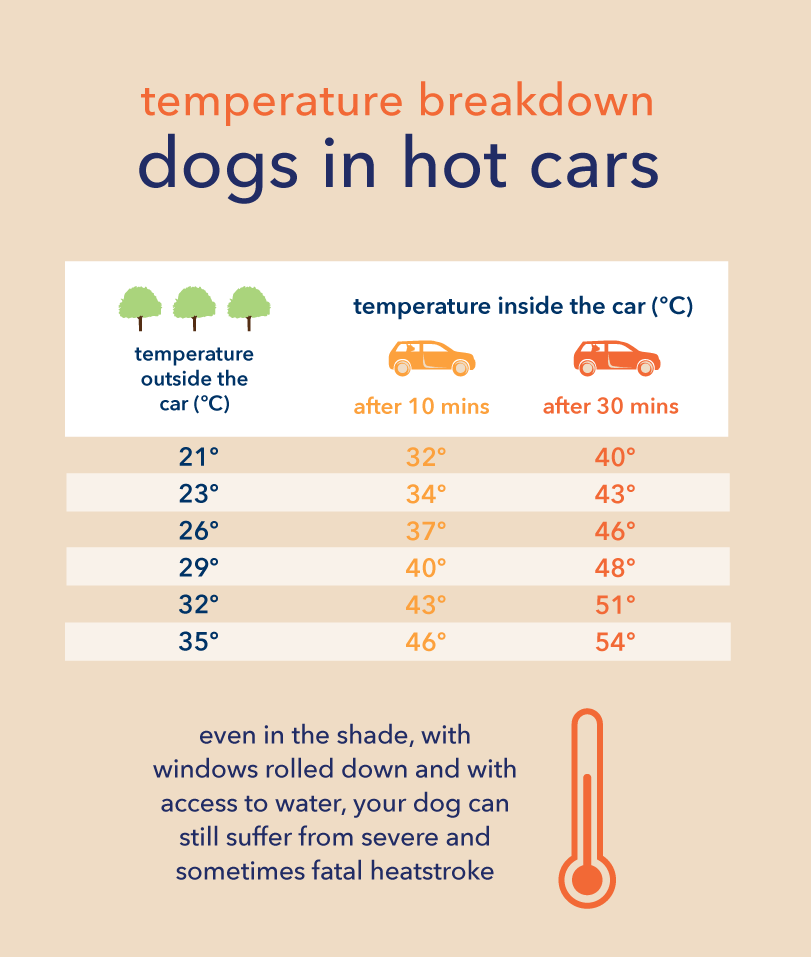May welcomes warmer weather, bank holidays and road trips, but it can also bring some nasty consequences for a man’s best friend if we aren’t careful. With frequent heat waves at this time of year, it’s important to remember that our dogs are wearing a permanent fur coat and are therefore affected by the heat a little differently to how we are.
Heatstroke in Dogs
Any dog can develop heatstroke (also known as heat exhaustion, sunstroke, or hyperthermia) but some dogs are more at risk than others. Energetic dogs, overweight dogs, flat-faced breeds and thick-haired dogs are likely to be affected by heatstroke the most. It’s important to know what heatstroke is, what the symptoms are and how to help a dog who you suspect has heatstroke.
Heatstroke happens when a dog’s body can’t cope with the rise in their internal temperature. Their fluffy coat doesn’t allow them to sweat like we do, and they can only cool down effectively by panting.
According to The Kennel Club, research has found there are 4 common causes of heatstroke in dogs:
- Over-exercising, or exercising on hot days (around 75% of cases)
- Not being able to cope in hot weather (around 13% of cases)
- Being in a hot vehicle (around 5% of cases)
- Being in a hot building (around 3% of cases)
What are the symptoms of heatstroke in dogs?
When a dogs internal temperature rises above their normal 37-39°C, they will start to show signs of heatstroke, the hotter the dog becomes the more damage will happen to their internal organs and tissue.
The signs of heatstroke to look out for are:
- Heavy panting (even when not exercising)
- Tiredness/exhaustion
- Stiffness or unwillingness to get up and move
- Excessive drooling
- Breathing difficulties (particularly in flat-faced breeds such as pugs and bulldogs)
- Vomiting
- Fitting or have convulsions
If you think your dog may have heatstroke, call your vet immediately whilst taking some measures to help cool your furry friend down.
How can I help a dog with heatstroke?
The first thing to do if you suspect a dog has heatstroke is to move them to a cool, shaded area out of the sunlight. Then immediately call a vet and follow their instructions.
The RSPCA emergency first aid guide recommends pouring cool water over the dog to help them cool down. Avoid using ice cold water as this may cause shock to your dog, worsening the situation. When pouring water over your pooch, direct the flow away from their head to prevent the inhalation of water from drowning your pet or making them unconscious.
Provide your dog with cool tap or room temperature water to drink in small amounts – don’t let them gulp it all down at once in case they feel sick!
Don’t put wet towels over your dog as this may trap the heat rather than cool them down. Only in milder cases the RSPCA say you can put one under your dog.
How can I avoid my dog getting heatstroke?
Keeping your dog cool in summer can help them feel more comfortable and reduce the risk of heat related illness.
As mentioned above, the most common cause of heatstroke is exercise or overexertion in the heat, so it’s vital to avoid the midday sun and walk your dog early in the morning or in the evening when the temperature is lower.
Not only is the weather going to cause heatstroke, but it’s also important to remember that the tarmac we walk our pets on could cause blisters and burns on our little friends’ paws. You can check if the pavement is too hot by holding the back of your hand on the pavement for 7 seconds – if the floor is too hot for you to hold your hand there for the full amount of time, it’s certainly too hot for your pooch!
Dogs in Cars
You may see photos circulating the internet of dogs in cars with notes on the windows saying they have air conditioning and water. Although it may assure you not to worry about them, there is still reason to be concerned.

This handy graphic from tails.com shows how quickly a car can heat up while your pet is inside. 21°C may not seem hot to us, but a car can heat up to 40°C in 30 minutes! Although only 5% of heatstroke cases come from being in a hot car, it’s vital to ensure that your dog is never left alone in a car when temperatures are high.
What to do if you see a dog in a hot car
If you spot dog trapped inside a car and are worried about them, West Midlands Police recommend contacting the police immediately to tell you what to do. If the car is parked at an event or shopping centre, asking someone to find the owner through an announcement can get the dog out of the car quickly.
Is it illegal to leave your dog in the car?
Although it isn’t illegal to leave your dog in a car, you could be held responsible for neglecting your animal under the Animal Welfare Act 2006 if your pooch is left unattended in warm weather.
If you’re planning on taking your dog out and about in warmer weather, remember to:
- Provide plenty of drinking water
- Avoid the midday sun where possible
- Keep an eye out for signs of heatstroke
- Never leave your furry friend in a car.





